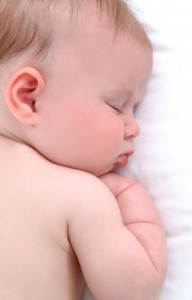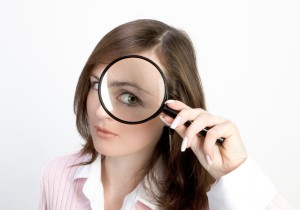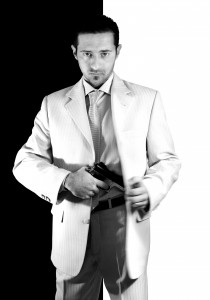
- Not a worry line in the world...
Warning- this is a long post, but very worth a read…
There has always been interest in looking younger, but with the introduction of the carbon dioxide (CO2) laser for the treatment of photoaged skin increasing numbers of patients are being lured to the plastic surgeon’s office who were not yet ready for a “cold-steel” surgical solution for dynamic and static rhytids. The ablative effect of the CO2 laser on the epidermal skin surface combined with the thermally induced collagen remodeling of the underlying dermis gave rise to a solution for both the pigmentary and structural changes associated with photoaged skin. The impressive early treatment results using the CO2 laser gave rise to non-ablative technologies seeking to minimize epithelial damage while retaining the beneficial property of subsurface collagen remodeling. Consumer and physician interest in “minimal-downtime” techniques of facial rejuvenation has driven the development of numerous laser and non-laser light sources that reverse the process of photoaging. Since non-ablative photorejuvination leaves the epidermis intact, patients can return to their normal lifestyles almost immediately after treatment and the complications associated with ablative techniques (infection, post-procedural swelling, persistent redness and long-term discolorationare avoided; however, clinical improvement is limited when used as a solitary treatment method. Both the patient and physician satisfaction is high with these non-ablative techniques and when combined with Botox, Fillers, and home skin care, results can approach those of the more invasive ablative CO2 laser therapies. This post seeks to describe the currently available non-ablative technologies with respect toward their mechanism of action and their clinical use.
HOW ULTRAVIOLET LIGHT CAUSES SKIN DAMAGE
The typical changes associated with aging skin can be attributed to both intrinsic (genetic) and extrinsic (environmental) factors. Cumulative exposure to sun remains the largest factor in aging skin and is responsible for most of the unwanted aesthetic effects. Photoaged skin is characterized by wrinkles, loose skin, uneven pigmentation, sun-spots, sallow color, dilated blood vessels, increased pore size, and a leathery appearance. In contrast, chronologically aged skin that has been protected from the sun is thin and has reduced elasticity but is otherwise smooth and unblemished. Dermal damage induced by ultraviolet irradiation is can be seen microscopically as disorganized collagen fiber and the accumulation of elastin containing material (solar elastoses). The collagen fibers are replaced by scar. The amount of fiber breakdown is probably responsible for the fine wrinkle formation associated with sun-damaged skin. Laboratory studies of sun-damaged skin reveals sustained elevation of matrix metalloproteinases. Matrix metalloproteinases destroy collagen and elastin and are believed to initiate the molecular pathway underlying the physical changes seen in sun-damaged skin.
PHOTOREJUVINATION AND THE REVERSAL OF PHOTOAGING EFFECTS
Nonablative photorejuvenation of human skin is a procedure designed to confine selectively, without any epidermal damage, thermal injury to the papillary, and upper reticular dermis leading to fibroblast activation and synthesis of new collagen and extracellular matrix material (neocollagenesis). The skin surface is not removed or modified. Instead, dermal “remodeling” or “toning” as a wound healing response is initiated to regenerate subsurface collagen. Photorejuvenation can span a broad range of wavelengths, light sources, and target chromophores, but may be generally divided into thermal and nonthermal mechanisms. In general, photorejuvenation uses light energy to cause a thermal injury in target tissues. Selective heating is achieved due to light energy being taken up by specific absorption molecules [chromophores] such as water, melanin [brown pigment], and hemoglobin [red pigment in blood vessels]. The laser energy absorbed by the target chromophore is then diffused in the form of heat to damage deeper surrounding tissues thus inducing the wound healing response. Hemoglobin has significant light absorption in the violet, blue/green, and yellow portions of the spectrum. The wavelengths suitable for targeting hemoglobin are in the absorption bands of 577-595 nm. Epidermal melanin is the dominant chromophore in human skin. Melanin is particularly concentrated in the basal layer typically 50-100 µm below the skin surface. Melanin absorption is highest in the ultraviolet portion of the spectrum, but also significantly absorbs the visible and near-infrared wavelengths. Subsequent heat conduction to adjacent dermal collagen may give rise to the observed histological changes necessary for nonablative photorejuvination. Laser-induced thermal injury should be confined to a zone 100 to 500 µm below the skin surface where the majority of solar elastoses in sun-damaged skin occur. More superficial injury may be ineffective for wrinkle reduction; deeper injury may result in scarring.
Photomodulation [LED therapy] is the term used to describe another form of non-ablative technology which uses low level light energy to directly stimulate fibroblast cells to make more collagen. No heat is conducted to the deeper dermal layers. The proposed mechanism is that the light molecules [photons] are absorbed directly by the fibroblast mitochondria [cell engines], thus increasing cell activity and the production of collagen.
PATIENT SELECTION AND INDICATIONS
Matching the patient to the appropriate photorejuvinative modality is the key to success in rejuvenation of photodamaged skin. Many methods of patient assessment are available, but the most useful include the Fitzpatrick skin type classification and the Glogau photoaging scale. Although these parameters become more important when the doctor is considering laser skin resurfacing, an understanding of these criteria is important when discussing the expectations and limitations of nonablative techniques with the patient. The Fitzpatrick Sun-Reactive Skin Type gives a very good indication of potential skin color changes following treatment. In general, patients with non-tanned skin color tolerate resurfacing procedures with minimal risk of color change. Resurfacing should be undertaken cautiously in patients with tanned or darker skin color. The Glogau photoaging scale categorizes photodamage based upon wrinkle depth to help the doctor to select the appropriate resurfacing procedure on the basis of lines and wrinkles that one wishes to correct. Glogau classifies photoaging types as: type I, “no wrinkles”; type II, “wrinkles in motion”; type III, “wrinkles at rest”; and type IV, “only wrinkles.” Patients with photoaging type I are not suitable candidates for aggressive interventions, nor are patients with photoaging type IV well served by superficial techniques.
CLASSIFICATION OF LASERS/LIGHT SOURCES
Numerous non-invasive techniques exist for rejuvenating facial skin. These technologies can be separated into 3 categories: 1). Those that improve skin texture and pigmentation- Intense Pulsed Light [IPL], Light-emitting diodes [LED], Non-ablative Neodynium:YAG lasers [Nd-YAG], 1540 nm Er:Glass laser, Pulsed Dye Lasers [PDL], and Fractionated Resurfacing [Fraxel/Pixel] 2). Wrinkle Removal- CO2 laser, Fraxel/Pixel Laser; and 3). Skin Tightening [Thermage, Titan].
CLINICAL APPLICATIONS AND USES OF LASERS/LIGHT SOURCES FOR PHOTOREJUVINATION
1320-nm Neodynmium:Yttrium-aluminum-garnet (Nd:YAG)
The 1320-nm Nd:YAG laser was the first commercially available system designed exclusively for selective dermal heating.
Manufacturers
(Cool Touch I, II, & III, New Star Lasers, Roseville, CA)
Mechanism of Action
Nd:YAG 1320 nm irradiation is nonspecifically absorbed in the human dermis. This wavelength is unique for its horizontal scattering. Such a wavelength when delivered at fairly high fluences can cause significant dermal damage. Such an approach can also create the potential for significant epidermal blistering. However, when 1320 nm Nd:YAG laser irradiation is coupled with cryogen cooling of the epidermis, a dermal wound can be created with little risk of epidermal damage. The laser utilizes a non-contact dynamic cooling agent (tetrafluoroethane) which is sprayed onto the skin for 30 msec, with a delay of 40 msec before each laser pulse (pre-cooling modality). This protects the superficial 50 to 100 µm of epidermis, and allows adequate heating of the sub-surface layers to create new fibroblasts, which will create new collagen. A thermal sensor within the laser hand-piece monitors pre-treatment skin temperatures as well as peak therapeutic temperatures. The significant difference between Cool Touch I and Cool Touch II is the addition of a post-cooling modality. In the post-cooling modality, the cryogen is sprayed immediately after the laser pulse. It is thought that this will allow deeper penetration, yet will still protect the superficial epidermis. Peak temperatures of 37-39º C are desired. There is a built in safety mechanism in this device. If the temperature of the skin surface is 40º C or higher, the unit will not fire. The Cool Touch III device has a system upgrade that allows for pre-, during, and post- treatment cooling modalities for added patient safety and comfort.
Clinical indications
Mild crow’s feet and lines around the mouth.
Advantages of therapy
Overall patient satisfaction in subjective improvement of skin texture. Histologic increases in collagen concentration in 50% of subjects that does not necessarily correlate with clinical improvement. Slight but statistically significant improvement for Fitzpatrick skin types I or II and mild, moderate, or severe wrinkles.
Disadvantages of therapy
Not meant for those with extensive sunspots. Those patients are best treated with either an ablative laser or a specific pigmented-lesion laser [IPL]. Using a laser without a post-cooling modality increases the risk of blistering, hyperpigmentation, and pitted scarring if the skin surface temperature is allowed to exceed 50º C. Mild post-treatment swelling and redness lasting 1 to 3 days can occur when using a laser without a post-cooling modality, whereas skin redness associated with lasers having a post-cooling modality generally subsides in about 20-30 minutes.
Contraindications to therapy
History of photosensitivity, inflammatory skin disease, or use of oral retinoids within one year prior to proposed treatment.
Patient preparation
The patient’s skin is cleansed with a gentle cleanser and then degreased with toner or acetone. A topical anesthetic paste (Photocaine, University Pharmacy, Salt Lake City) is applied for 30 minutes.
Anticipated results
Mild redness as noted above. Variable improvement in facial wrinkles, with maximal improvement noted in more severe lines.
1064-nm Q-switched Neodynmium:Yttrium-aluminum-garnet (Nd:YAG)
The Q-switched Nd:YAG laser was the first laser used as a nonablative tool for skin rejuvenation.
Manufacturers
(Medlite IV; HOYA Conbio, Santa Clara, CA; and QYAG-5; Palomar, Burlington, MA)
Mechanism of action
The chromophores for 1064-nm radiation are, in decreasing order are melanin [brown], hemoglobin [red], and water. Water weakly absorbs laser energy at this wavelength and is gently heated over the optical penetration depth of the beam (about 5-10 mm); however, severe heating remains localized to the red and brown pigments. It is believed that the absorbed laser energy causes the localized rupture of capillaries and melanosomes, giving rise to a partially injured epidermis and subsequent skin repair.
Clinical indications
Facial telangiectasias (spider veins), acne rosacea, mild sun damaged skin.
Advantages of therapy
Mild improvement in 97% of mild wrinkles, 68% improvement in moderate wrinkles, 20% improvement in brown and red pigment changes in fair to slightly tanned skin, 35% improvement in pigmentary changes of skin types darker than tanned skin.
Disadvantages of therapy
Mild redness lasting 1 to 2 hours (all patients), and bruising. Post-treatment skin color changes either lighter or darker in tanned or darker skin.
Contraindications to therapy
None, however lower fluences should be used in patients with darker skin tones to avoid temporary skin lightening.
Patient preparation
The patient’s skin is cleansed thoroughly and jewelry is removed.
Anticipated results
Mild redness persisting for 1 to 2 hours, wrinkle reduction and pigmentary improvement as specified above.
Fractional Skin Resurfacing
To date there have been two categories of laser skin rejuvenation—ablative and non-ablative, and both have significant disadvantages. Ablative techniques resurface broad areas of the skin, but carry a high-risk profile. Non-ablative techniques, carry fewer risks, but produce limited clinical improvement. FractionalTM Photothermolysis is a new technology that promises to deliver the benefits formerly only realized using ablative techniques with the minimal downtime enjoyed by patients treated with non-ablative technologies.
Manufacturer
FraxelTM SR (Reliant Technologies, Inc., San Diego, CA), Pixel (Alma Lasers)
Mechanism of action
Fractional Laser Treatment (FLT) produces thousands of tiny treatment zones on skin, known as “microthermal treatment zones” (MTZs). The target chromophore for FLT is water, however, only a very small fraction of the skin is treated at one sitting. Each wound field is composed of thousands of microthermal zones and surrounding spared tissue units that comprise “nodes” of skin repair. The wound healing response differs from previous techniques because viable cells exist between treatment zones, including epidermal stem cells and transient amplifying cell populations. Each laser hit produces a 30-70 micron plug of Microscopic Epidermal Necrotic Debris (MENDs) that naturally exfoliate in approximately 14 days. During this time period, the skin takes on a bronzed appearance. The most superficial layer of the skin contains very little water, therefore it remains intact after FLT, preventing water loss and reducing the risk of infection. The Fraxel laser energy passes through the most superficial layer of the skin and into the deeper dermal collagen.
Clinical indications
All epidermal and dermal changes associated with photoaging.
Advantages of therapy
Pain levels very well tolerated by patients. Minimal downtime. Ease of physician use. Decreased risk profile secondary to intact barrier function of the superficial skin surface.
Disadvantages of therapy
Sunburn like sensation for 1 hour after treatment. Post-treatment redness lasting 5 to 7 days. Bronzed appearance lasting 3 to 14 days. Gradual treatment results with full tightening effect apparent after approximately three months.
Contraindications to therapy
Any patient with a known lidocaine allergy should not undergo Fraxel laser treatment. Patients currently using Accutane, or those who are immunocompromised or have a history of keloid scarring should be excluded from treatment as well. Like most other laser treatments that cause some removal of the epidermal protective layer, the Fraxel laser treatment could induce a herpetic [cold sore] outbreak in susceptible individuals. Most physicians institute anti-viral prophylaxis prior to laser treatment.
Patient preparation
The treatment area is thoroughly cleansed prior to the procedure using a mild, gently abrasive skin cleanser. OptiGuideTM Blue, a water-soluble tint, is applied to highlight the contours of the skin, and to allow the laser’s tracking system to adjust the treatment pattern with respect to hand piece velocity. A lipid based topical anesthetic ointment is applied to the skin for about 45 minutes, after which the treatment may be applied directly through the anesthetic ointment.
Suggested treatment parameters
A series of 3 to 5 treatments, spaced four to seven days apart has been found to be effective. A complete procedure consists of a series of horizontal and vertical passes with the laser. Each pass consists of overlapping strokes. Each treatment session addresses approximately 20 % of the skin surface.
Anticipated results
There is a mild sunburn sensation for about an hour then virtually no discomfort. The skin will have a pinkish tone for 5-7 days with minimal swelling. Patients may apply cosmetics immediately after the procedure if desired. The skin is completely re-epithelialized within 24 hours. The bronze appearance created by the MENDs lasts for 3 to 14 days. Treatment results are gradual, with a stepwise improvement in surface appearance and texture. It takes about three months to achieve the full tightening effect.
1540-nm Erbium:glass Laser
Manufacturers
(Aramis, Quantel Medical, Les Ulis Cedex, France)
Mechanism of action
The Er:glass 1540 nm Aramis-Quantel laser emits a wavelength of particular interest due to its high water absorption which deposits the laser energy primarily in the dermis. The skin is cooled using the Constans Handpiece (Quantel Medical, Clermont-Ferrand, France). This is a cryo-sapphire-tipped handpiece in direct contact with the skin with purified tetrafluoroethane cryogen circulating inside. The handpiece has a real-time temperature monitor at the sapphire for immediate feedback.
Clinical indications
Crow’s feet and fine lines around the mouth.
Advantages of therapy
Lack of pain, discomfort, or downtime. Collagen production was evaluated with silicone molds and ultrasound measurement. Ultrasound revealed a 17% increase in dermal thickness. Silicone imprints were analyzed and showed a 40% improvement in dermal collagen as noted by the reduction in anisotropy. Ultrasound imaging demonstrated an increase of the dermis thickness as a function of time. Biopsy specimens show the reduction of solar elastotic fibers beginning 7 days after a single treatment, more markedly after 3 weeks, and very few of them left 2 months after one treatment. Superficial collagen bands in the upper dermis thickened and the new collagen fibers seemed to be arranged more horizontally. Six weeks after the fourth treatment, 62% of the patients were satisfied with their results.
Disadvantages of therapy
Some patients may have greater expectations and be disappointed with their results. Improvement is slow (in months), and mild, with most patients appreciating more elastic and firmer skin.
Contraindications to therapy
Photosensitivity, use of oral retinoids within one year of proposed treatment.
Patient preparation
Before treatment the area to be treated is prepared with a skin cleanser only. The treatment can be performed without any kind of anesthesia.
585- nm Pulsed Dye Laser
Manufacturers
(VBeam; Godelz, Wayland, MA; and VStar;Cynosure, Helmsford, MA)
Mechanism of action
Pulsed dye (PDL) lasers emit yellow light (585 nm). This wavelength of laser light allows for 50% dermal penetration to a depth of approximately 400 microns and is specifically absorbed in the blood vessels of the upper dermal vascular plexus, after passing through the epidermis with minimal interaction. The light energy that reaches the vascular plexus is of insufficient energy to cause vessel rupture or coagulation, yet is of sufficient intensity to induce a low grade inflammatory response. Endothelial cells within the injured vessel walls release inflammatory mediators that stimulates fibroblast activity. The fibroblasts give rise to new collagen production.
Clinical indications
Crows’ feet, port wine stains, cherry-red spots, broken blood capillaries.
Advantages of therapy
After six months, 90% of patients with mild wrinkling demonstrated 50% or more clinical improvement. Deeper wrinkles demonstrated greater improvement than shallowwrinkles. Enhanced collagen production by an average of 84% measured 72 hours after a single laser treatment.
Disadvantages of therapy
Bruising and swelling in all patients (lasting 1-2 weeks).
Contraindications to therapy
None.
Patient preparation
No preparation or application of topical or general anesthesia is required.
Intense Pulsed Light (IPL)
Manufacturers
Quantum SR; Lumenis, Canta Clara, CA; Estelux; Palomar, Burlington, MA; Prolite; Alderm, Irvine, CA; and Aurora; Syneron, Yokneam, Israel, Alma Lasers)
Mechanism of action
The intense pulsed light is a nonlaser light source that emits a broad, continuous spectrum of light energy ranging from 500 to 1200 nm. With cutoff filters, shorter wavelength portions of the spectrum can be blocked. Depending on the filter used, the longer portion of the transmitted spectrum targets hemoglobin [red], melanin [brown], and water to varying degrees (shorter filters favor hemoglobin and melanin heating). The effect on dermal collagen is presumably caused by heat diffusion from the blood vessels and by the secretion of inflammatory mediators induced by direct vessel heating. Tissue water is also directly heated to a smaller degree. The Quantum SR has a thermoelectrically chilled delivery system, and when used with an ice-cold coupling gel, minimizes discomfort and the potential for epithelial burning.
Clinical indications
The Quantum SR is effective in the treatment of vascular and pigmentary lesions of the skin in the face, neck, chest, and hands. Vascular lesions such as rosacea, erythema, flushing, broken capillaries, and post-laser redness respond well to intense pulsed light therapy. Pigmentary changes such as hyperpigmentation, melasma, and lines of demarcation after laser or chemical peels also are treatable with intense pulsed light therapy. The device is also useful in the treatment of mild to moderate facial wrinkles.
Advantages of therapy
The advantages of IPL when compared to other nonablative technologies include minimal risk of eye injury, the ability to treat larger areas of nonfacial skin, rapid visualization of improvement in treated areas, and minimal patient discomfort.
Disadvantages of therapy
Treatment results in an immediate darkening of already hyperpigmented lesions, a reaction which should be explained to patients prior to treatment. Within 24 to 48 hours following treatment, dark spots will take on a darker and crusty “peppery” appearance. These will spontaneously peel away over five to six days post-treatment.
Contraindications to therapy
There are four relative and unproven contraindications to performing IPL photorejuvination. These include patients who have a history of photosensitivity reaction, those taking photosensitizing medications, or the use of Accutane within 6 months prior to intended treatment.
Patient preparation
Topical anesthesia is not required for every patient. The anesthetic is applied to the skin surface and occluded with plastic wrap for 1 to 1-1/2 hours prior to treatment. Before treatment the skin is thoroughly cleansed and a thin layer of ice-cold coupling gel is applied to the areas to be treated.
Suggested treatment parameters
Guidelines when using IPL technology are to be conservative during the initial treatment session using lower fluences and subsequently watching for tissue response. Begin treatments in a nonvisual zone (i.e. postauricular), examine results of a test spot and adjust parameters accordingly, the endpoint of therapy is mild swelling and redness. On subsequent visits the patient should be asked about and bruising, blisters, or swelling in response to the prior treatment. Treatments were spaced 3 weeks apart.
Anticipated results
Other than mild, transient redness, there are no other immediate visible signs of treatment, and patients may resume normal activities immediately. Ninety percent of patients achieve greater than 75% improvement in rosacea, 84% improvement in fine wrinkles, 78% improvement in skin coarseness, and 49% improvement in pore size. Microscopic analysis reveals early signs of new collagen formation, diminished brown pigment granules, and reduced pore size.
Light Emitting Diodes (LED)
Manufacturers
GentleWaves (Light Bioscience, Virgina Beach, VA).
Mechanism of action
Light emitting diode [LED] photomodulation uses coded pulses of low energy, non-laser, non-thermal, light energy to stimulate mitochondrial activity, increase collagen and fibroblast production and to decrease collagenase (metalloproteinase-MMP 1). Light emitting diodes are narrow band emitters of a broad range of light energy ranging from ultraviolet to visible to infrared. LEDs typically emit visible yellow light. It is possible that this narrow band wavelength profile contributes to the unique characteristics of LED photomodulation. [3].
Clinical indications
GentleWaves LED photomodulation reduces the appearance of fine lines and wrinkles, as well as improves the appearance of photodamage induced dyspigmentation and increased pore size.
Advantages of therapy
No side effects, downtime, or pain. Safe for all skin types. Fast and convenient. A multicenter clinical trial conducted on 90 photoaged women revealed improvement in the crow’s feet appearance in 62%, and 36% improvement in the upper lip appearance. Other observations included a 27% reduction in skin roughness, 14% improvement in pore size, and 25% reduction in redness. Microscopic analysis showed an increase in extracellular matrix proteins associated with clinical improvement in wrinkles.
Disadvantages of therapy
None.
Contraindications to therapy
None.
Patient preparation
Skin cleansing prior to treatment.
Suggested treatment parameters
The currently recommended regimen is 50 seconds weekly for 8 weeks.
Anticipated results
As above.
Radiofrequency Device: Thermalifting
Manufacturers
Thermage (Thermage, Hayward, CA).
Mechanism of action
This device delivers volumetric and uniform heating to the deep dermis via a unique form of radiofrequency (RF) energy. Unlike lasers, which target specific chromophores on the principle of selective photothermolysis, radiofrequency causes movement of charged particles within the skin, and the resultant molecular motion generates heat. The heat in turn causes collagen shrinkage and new collagen deposition. The treatment tip delivers the RF energy to the skin with simultaneous surface cooling. A coupling fluid is used to ensure proper contact with the skin. Surface cooling is maintained throughout treatment cycle (pre-, during, and post- treatment) as cryogen is sprayed onto the cooling membrane in the treatment tip.
Clinical indications
Thermage is FDA approved for the skin tightening of the eyelids, face, neck, arms, stomach, hands, buttocks, and legs.
Advantages of therapy
No downtime. High patient satisfaction levels. Patients frequently commented that the treated area felt tighter and that family members and friends noticed a difference in their appearance. Changes in appearance were corroborated microscopically with findings of a thickened epidermis and increased density of dermal collagen post-treatment.
Disadvantages of therapy
Some patients relay moderate discomfort levels during the procedure.
Contraindications to therapy
Metallic implants in the body (artificial knee, artificial hip, metal rods for spinal stabilization), pacemakers, and pregnancy.
Patient preparation
Before treatment the skin is thoroughly cleansed and all topical anesthetic cream, make up, and jewelry are removed. A thin layer of conductive fluid is applied to the areas to be treated.
Anticipated results
All patients experience mild redness and swelling in the treatment areas that resolves completely within one hour post-treatment. All patients see an immediate response, with more rapid improvement at 6 weeks culminating at 6 months after a single treatment. Younger patients (average age 51) tend to respond better and that higher dial settings and corresponding higher energy per pulse correlated with better response. Those who had the entire surface area of the face and neck treated tend to do better than those with partial treatment. More favorable results are derived from more frequent passes of the device using lower energy settings.
Titan 1100-1800 nm Infrared Laser
Manufacturers
Cutera, Brisbane, CA.
Mechanism of action
The Titan laser was developed as a “light based” response to radio frequency skin tightening devices. The Titan laser operates between 1100 nm and 1800 nm targeting water, resulting in heating depths from 1-3 mm. The epidermal temperature is kept at or below 40º C by pre-, during, and post-cooling of the epidermis by a sapphire tip.
Clinical indications
The Titan is cleared for the treatment of wrinkles in Europe, and for general dermatologic use in Canada. In the United States, the Titan is cleared for superficial heating, for the purpose of elevating tissue temperature for temporary increase in local circulation where applied. The primary function is the tightening of skin laxity in all parts of the body such as the area beneath the chin, jowls, abdomen, arms, and other areas. It may not be indicated for the deep creases that extend from the nostril to the lip (nasolabial fold).
Advantages of therapy
Manufacturer claims increased safety profile compared to standard radio frequency devices, increased predictability of energy application prevents side effects of tissue overheating and subsequent fat atrophy. Superior epidermal cooling method and scalable platform with a variety of handpieces, including 2 IPL handpieces to treat for hair removal and vascular lesions
Disadvantages of therapy
Does not penetrate as deeply as Thermage, therefore multiple treatment sessions are required.
Contraindications to therapy
None.
Patient preparation
Skin is cleansed prior to procedure. No anesthesia is required. At higher energy levels used to treat larger areas of the body such as the abdomen, providing patient with oral narcotic and anxiety medication increases treatment tolerance
Anticipated results
Immediate improvement in skin laxity followed by gradual improvement over a three to six month period as new collagen is formed and the skin tightens.
IN SUMMARY
With the expanding variety of therapies available for patients seeking facial skin rejuvenation, the physician must appreciate the indications, complications, benefits, and limitations of each. Nonablative photorejuvenation offers a new approach in treating photodamaged skin. Practitioners of nonablative skin remodeling have advocated serial treatments to achieve gradual, cumulative improvement. Collagen deposition occurs over a period of several months, so the final cosmetic appearance is not immediately evident. Patients often describe an improvement in skin tone after nonablative laser treatment. Despite these findings, the ease of treatment, minimal discomfort, and limited side-effect profile makes nonablative laser remodeling an appealing addition to the cosmetic surgeon’s treatment modalities. The drawback of these positive features is mild cosmetic improvement. Subtle enhancements may be acceptable to some patients. Nonablative laser resurfacing is an excellent option for patients unwilling to risk the side effects, pay for the more expensive procedures, or take time off for a lengthy recovery as from ablative resurfacing techniques. Proper patient evaluation and counseling will provide for optimal patient satisfaction. With the continued focus on facial skin rejuvenation, nonablative techniques will continue to evolve and further meet with the demands of our ever-growing, sophisticated patient population’s needs.
Have a Beautiful Day!
Dr. Lisa






















